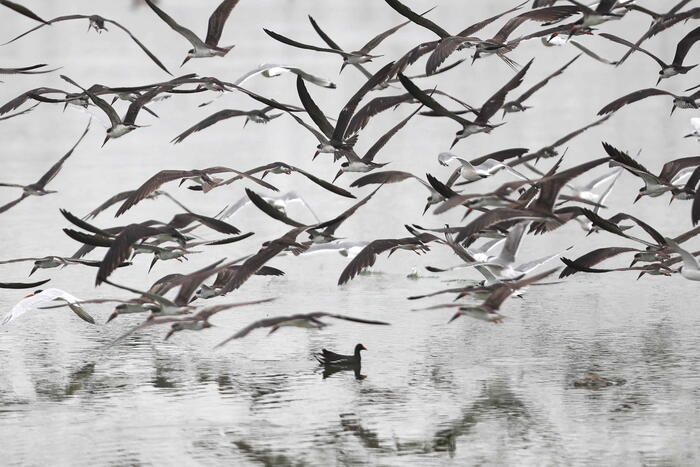Good news for ten threatened bird and fish species: Thanks to extensive conservation measures and breeding programs, populations have recovered slightly, according to the World Conservation Union (IUCN). The new red list of endangered plant and animal species classifies eight bird species and two fish species as less endangered than before.
"The stories of the ten species with clear improvement show that nature recovers, if it even gets a small chance," said acting IUCN boss Grethel Aguilar. "This new edition of the Red List is a spark of hope in the midst of biodiversity crisis."
Positive is the development of the Guamralle (Gallirallus owstoni). On the Pacific island of Guam, the last wild specimen of flightless birds were killed in 1987 by a snake. Now, bred couples had settled there again. They had been used on the neighboring island of Cocos Island. The species is therefore no longer considered "extinct in nature", but as "threatened with extinction".
Universal Images Group / Getty Images
Guamralle: It was once considered "extinct in nature"
Of the once endangered Mauritius Parakeet (Psittacula eques), there are now about 750 couples, he was only considered as endangered. A species of cod perch in Australia (Maccullochella macquariensis) was only endangered, but no longer seriously endangered.
73 species are more endangered today than a few months ago
For many animals and plants, however, the decline continues. Overall, the Red List currently covers more than 110,000 animal and plant species, more than 30,000 of which are threatened with extinction. In July there were a total of more than 105,000 species, of which a good 28,000 were threatened with extinction. The percentage of endangered species has therefore risen by just over half a percent. The list is updated at least twice a year.
73 species are therefore more at risk today than they were in July. The population of European wild rabbits (Oryctolagus cuniculus) is indeed large overall, according to the IUCN. In the home of the species in Spain, Portugal and southern France, however, the wild rabbit is no longer only potentially, but now highly endangered.
Carsten Rehder / dpa
Wild rabbits: Highly endangered in Spain, Portugal and southern France
A virus disease has decimated the number by 70 percent. The wild rabbits are in the region important prey for the endangered Pardelluchs (Lynx pardinus) and the Spanish imperial eagle (Aquila adalberti).
Moreover, it is becoming increasingly obvious that climate change endangers biodiversity, according to the IUCN. In Australia, well over a third of freshwater fish are threatened with extinction. More than half of them are directly affected by climate change, for example because of lack of rain or temperatures rise.















